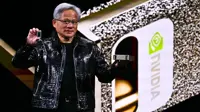Retailers turning to new technologies to retain market share
04 Oct 2007
Faced with the threat of online retailing and other pressures, retailers globally are seeking to win back market share by making the customers shopping ''experience'' more theatrical, with emphasis placed on the sensuous elements of an in-store shopping trip.
According
to a new report by independent market analyst Datamonitor, the next step in the
battle to retain customers'' is to streamline the buying experience, bringing it
more in line with internet shopping in terms of ease and speed of transaction.
The report Shop X: where''s the store heading? examines the most pertinent technologies
helping retailers achieve this, with advice to both retailers and technology venders
for development and application.
"A combination of pressures including
rising energy costs and the encroachment of cut price and multi-channel retailers
are squeezing profit margins, says Alex Kwiatkowski, Lead analyst within Datamonitor''s
''vertical market technology'' team and author of the study.
"More
recently the collapse of the US sub-prime mortgage market has spread financial
contagion throughout the world, stemming the flood of finance available to retailers
and hitting consumers'' pockets. Growth of private equity threatens underperforming
retailers. Given the difficult market conditions retailers are turning to technology
to ameliorate their situation."
Though expensive, digital signage
is the fastest growing advertising medium Within the retail environment, digital
signage is employed for two distinct purposes; in shelf edge labeling to display
prices and as a dynamic advertising vehicle.
The technology allows advertisements to be tailored to the most appropriate audience, through the use of add-ons which enable digital signage screens to determine the sex and approximate age range of viewers, as well as differenciate between individuals and groups. In the next stage of development, screens will be able to log when people point at a particular product on a shelf and then stream adverts relating to it to the nearest screens.
As
well as incorporating increasingly sophisticated display functions, proximity
sensors enable the systems to determine when someone is nearby. When the system
receives notification of a person within a certain parameter, the sound increases;
when s/he leaves, the sound level is decreased. Furthermore, the technology can
be incorporated with highly precise sound streams which target the message to
a specific area of the store, thereby minimizing sound pollution and irritation
levels for customers.
Tests carried out on in-store digital signage systems
bear it out to be an effective method of advertising, leading to increased spend
and elevated brand awareness. Although the cost of installing and maintaining
a digital signage system is significant, Datamonitor believes that the benefits
which can accrue from deployment make it worth investing in for larger retailers.
"Given the average person is targeted with approximately 3,000 commercials
per day, retailers are seeking to differentiate products by means of a more engaging
medium than static signposting and traditional TV, which digital signage offers
retailers a means of doing," says Kwiatkowski.
NFC is an ideal payment
method for industries in which speed is essential
Near field communication
(NFC) is another application of radio frequency identification (RFID) technology,
thereby avoiding the need for touch. In retailing, NFC technologies are used to
facilitate ''contactless'' payments. Given that this form of payment requires neither
signature nor pin input, it is considerably faster than paying with cash or credit
/ debit cards.
Payment by NFC increases average spend per transaction,
improves the shopping experience for customers by slashing queue times and is
a safer medium for retailers to conduct business in than cash, as it eliminates
shrinkage issues.
NFC means that the mobile phone is set to be an important
tool for retailers due to its capability as a fast and relatively secure payment
device. But retailers should realize that it can also become a means of direct
marketing to consumers, via Bluetooth technology. If consumers are encouraged
to use their mobile devices for NFC payments, retailers will also have the opportunity
to establish more of a personal relationship with consumers if they use a consumer''s
mobile device to target focused advertising and promotions and interact with the
consumer directly.
"Major retailers who do not implement the technology
face being left behind as customers demand ever faster transactions, a trend exacerbated
by the ease and speed of online retailing."
Self service check outs
cut costs, queue times and provide a solution to employee shortages For retailers
self-service tills translate to savings on labor, reduction of shrinkage - the
presence of CCTV and sensitive weighting technologies reduces theft, and fewer
cashier errors.
The point of sale (POS) is an important arena for retailers,
as a last chance to increase sales, advertise to what is effectively a captive
audience and reinforce brand values. Within the POS industry, self-check out is
one of the technologies currently garnering most interest.
The
technology is popular due to its ability to cut checkout time with one attendant
capable of overseeing up to six checkout terminals; it also appears to enjoy favor
with consumers. In a study conducted in Woolworths Big W store''s in France last
year, 25 per cent of customers chose the self-service option. Other grocery stores
who have conducted tests are reporting between 20 per cent and 50 per cent of
their daily transactions processed via the self service check out.
Kwiatkowski
concludes, "Meeting the demands of today''s retail environment requires clever
application of key technologies. In a saturated market new technologies such as
NFC play an important role by offering retailers innovative means of engaging
with consumers and helping them to retain market share. These technologies bring
with them a variety of challenges, both for the vendors and retailers alike -
in terms of integration and standardization and also in terms of achieving the
maximum return on investment."



.webp)





























